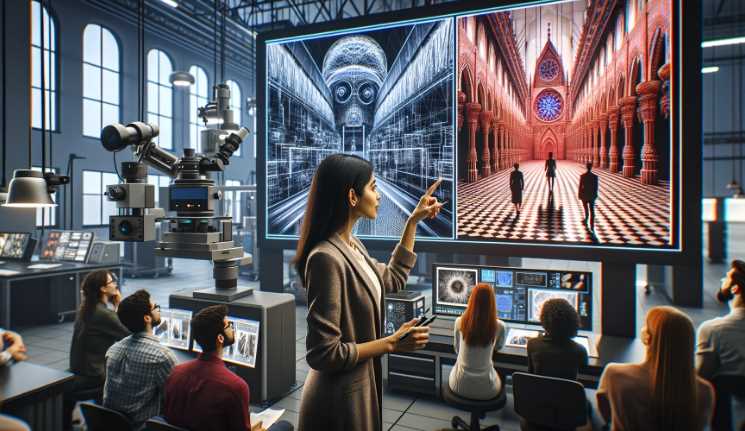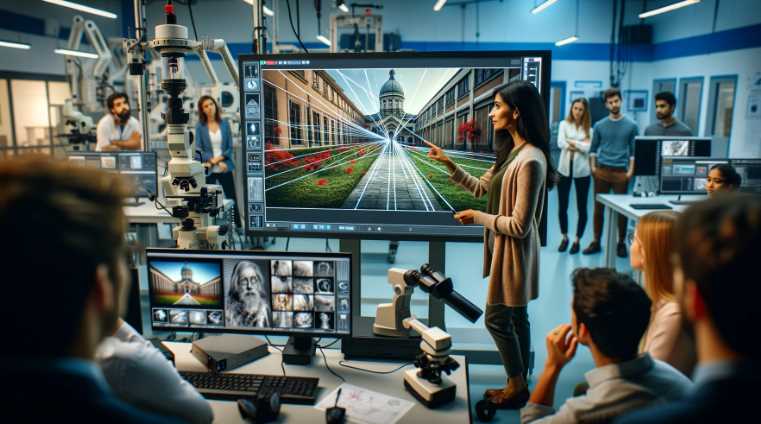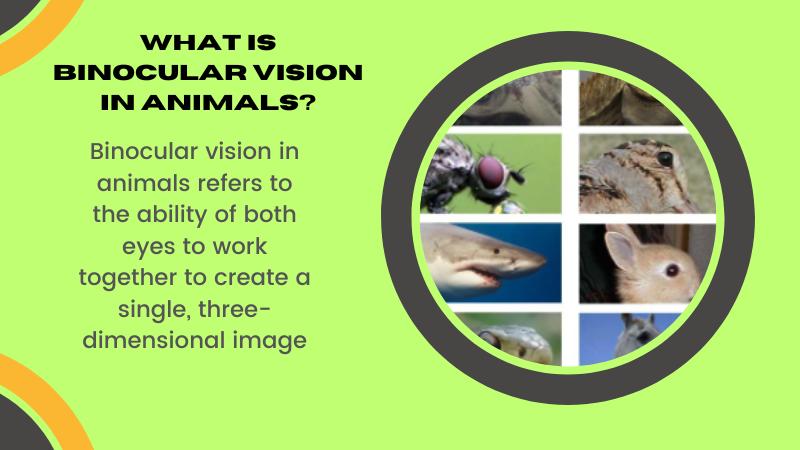No, binocular depth perception does not apply to photos because photos are two-dimensional representations, and binocular depth perception relies on the input from both eyes to perceive depth in three-dimensional space.
Binocular depth perception is the ability of the brain to use the slightly different images received by each eye to perceive depth in three-dimensional space. This occurs because each eye has a slightly different perspective on the same scene, and the brain combines these two perspectives to create a sense of depth.
In contrast, photos are two-dimensional representations captured by a camera or displayed on a screen. They do not provide the separate perspectives that our eyes do when viewing a scene in real life. Therefore, the cues for binocular depth perception are absent in photos.
| Aspect | Binocular Depth Perception | Photos |
|---|---|---|
| Nature | Perceives depth in 3D space using input from both eyes | Two-dimensional representations captured by a camera or displayed on a screen |
| Input | Relies on the slightly different images received by each eye | Lacks the separate perspectives provided by each eye |
| Cues | Uses binocular cues such as convergence and retinal disparity | Absence of binocular cues, relies on monocular cues like perspective, size, and overlap |
| Application | Applicable to real-life scenes viewed with both eyes | Not applicable, as photos lack the required binocular input for depth perception |

How does binocular depth perception apply to photos?
Binocular depth perception, the ability of the human brain to perceive depth using input from both eyes, plays a fascinating role in our perception of the physical world. However, when it comes to photos, the application of binocular depth perception is nuanced.
In static, two-dimensional photos, the absence of real-world depth cues challenges the direct involvement of binocular vision. Unlike our everyday experiences, where the brain combines the slightly different images received from each eye to perceive depth, photos lack this inherent binocular input. Instead, photo interpretation relies more heavily on monocular depth cues and various visual elements.
Binocular Perception in Static Photos:
In the realm of static images, the impact of binocular depth perception is limited. The absence of dynamic, real-time scenes reduces the significance of simultaneous input from both eyes. The brain must adapt to alternative cues to create a perception of depth.
Reliance on Monocular Depth Cues:
While binocular depth cues are less prominent in photos, monocular depth cues step into the spotlight. Elements such as linear perspective, relative size, and overlap become crucial in conveying depth. Linear perspective, where parallel lines converge, creates a sense of depth. Similarly, the relative size of objects and their overlap contribute to the illusion of distance.
Digital Technologies and Simulated Binocular Depth:
Despite the inherent limitations of static photos, digital technologies have introduced methods to simulate binocular depth perception. Stereoscopic imaging, for instance, utilizes two slightly different images for each eye, creating a 3D effect. Depth maps, which assign depth values to different elements in an image, and parallax scrolling in digital media also contribute to an illusion of depth, enhancing the viewer’s visual experience.
Photography Genres and Binocular Depth:
Certain genres of photography place a higher emphasis on binocular depth perception. In 3D photography, the goal is to create a stereoscopic effect that mimics the way human eyes naturally perceive depth. Virtual reality (VR) content also heavily relies on binocular vision to create immersive experiences, where depth plays a crucial role in the sense of presence.
Photographic Techniques Enhancing Depth:
Photographers, aware of the challenges posed by the absence of direct binocular input, employ specific techniques to enhance depth perception in their photos. Strategic framing, the use of leading lines, and the creation of foreground-background relationships guide the viewer’s gaze and contribute to a sense of depth.
In summary, while binocular depth perception is a fundamental aspect of our perception of the physical world, its direct application to static photos is limited. Monocular depth cues and innovative photographic techniques take center stage, demonstrating the adaptability of the human brain in interpreting depth in the realm of visual art.
Does binocular depth perception play a role in interpreting photos?
Binocular depth perception primarily relies on the coordination between both eyes, allowing humans to perceive depth in the physical world. However, when viewing photos, the absence of real-world depth cues raises questions. In photos, depth is often conveyed through various visual elements like perspective and shading rather than binocular vision.
| Aspect | Explanation |
|---|---|
| Binocular Perception | Limited influence in static, two-dimensional images |
| Depth Cues | Relies on visual elements such as perspective |
| Photo Interpretation | Mainly through monocular depth cues |
Can monocular depth cues replace binocular depth perception in photos?
Monocular depth cues, such as linear perspective, size, and overlap, become prominent in photos. While binocular vision enhances depth perception in real-life scenarios, photos primarily rely on these monocular cues. The brain effectively interprets these visual cues to create a perception of depth.
| Depth Cue | Significance in Photos |
|---|---|
| Linear Perspective | Emphasizes depth through converging lines |
| Size | Relative size indicates distance |
| Overlap | Objects appearing in front suggest closeness |
How do digital technologies simulate binocular depth in photos?
Digital technologies employ various techniques to simulate binocular depth perception in photos. Stereoscopic imaging, for example, uses two slightly different images for each eye to create a 3D effect. Additionally, depth maps and parallax scrolling in digital media contribute to an illusion of depth, enhancing the viewer’s perception.
| Technology | Application in Simulating Depth |
|---|---|
| Stereoscopic Imaging | Creates a 3D effect with two images |
| Depth Maps | Assigns depth values to image elements |
| Parallax Scrolling | Induces depth through layered movement |
Are there specific genres of photography where binocular depth perception is more critical?
Certain photography genres, such as 3D photography and virtual reality (VR) content, heavily rely on binocular depth perception. These genres leverage techniques that mimic the way human eyes perceive depth in real life, enhancing the immersive experience for viewers.
| Photography Genre | Reliance on Binocular Depth Perception |
|---|---|
| 3D Photography | Emphasizes depth for stereoscopic effect |
| Virtual Reality (VR) | Creates immersive, depth-rich experiences |
How do photographers enhance depth perception in their photos?
Photographers employ various techniques to enhance depth perception in their photos. Strategic framing, the use of leading lines, and creating foreground-background relationships are common practices. These methods, while not directly tied to binocular vision, play a crucial role in guiding the viewer’s eyes and creating a sense of depth.
| Photography Technique | Role in Enhancing Depth Perception |
|---|---|
| Strategic Framing | Directs attention, creates depth |
| Leading Lines | Guides the viewer’s gaze into the frame |
| Foreground-Background | Establishes depth through visual layers |

I am an enthusiastic student of optics, so I may be biased when I say that optics is one of the most critical fields. It doesn’t matter what type of optics you are talking about – optics for astronomy, medicine, engineering, or pleasure – all types are essential.
Table of Contents

